In November 2021, Hanoi opened its first metro line, Cát Linh – Hà Đông. It took 10 years for this project to be built and to enter service.
Having rode the RER A and Paris Metro for years in my youth, I can tell you that aerial metro is often the best experience you can get. Much better than underground metro, as being underground without any landscape to appreciate can feel a bit claustrophobic.
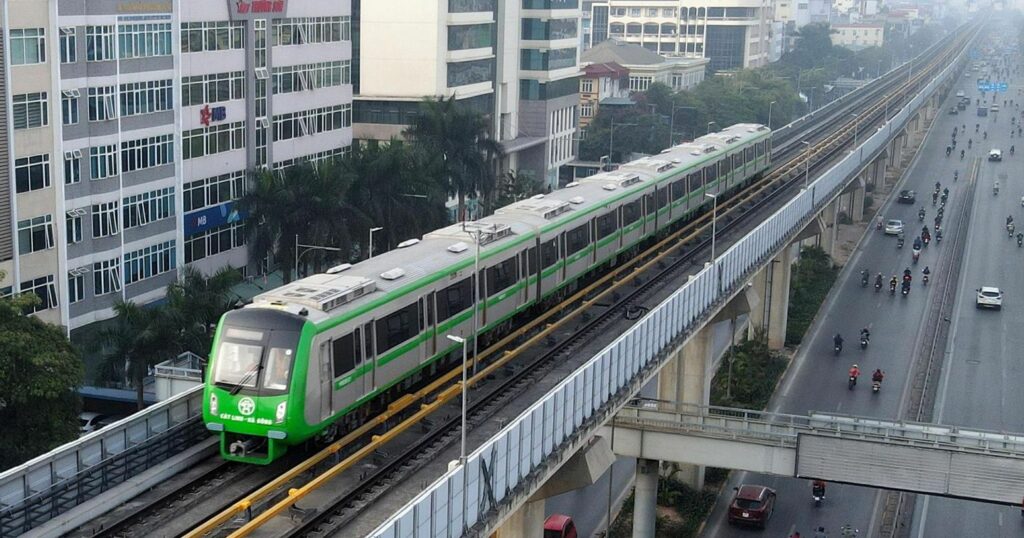
I was curious about this first metro station built in Vietnam and how it would compare to the ones I’ve tried in other countries. It was also an opportunity to take some portraits of my wife while doing a review.
The Metro Stations
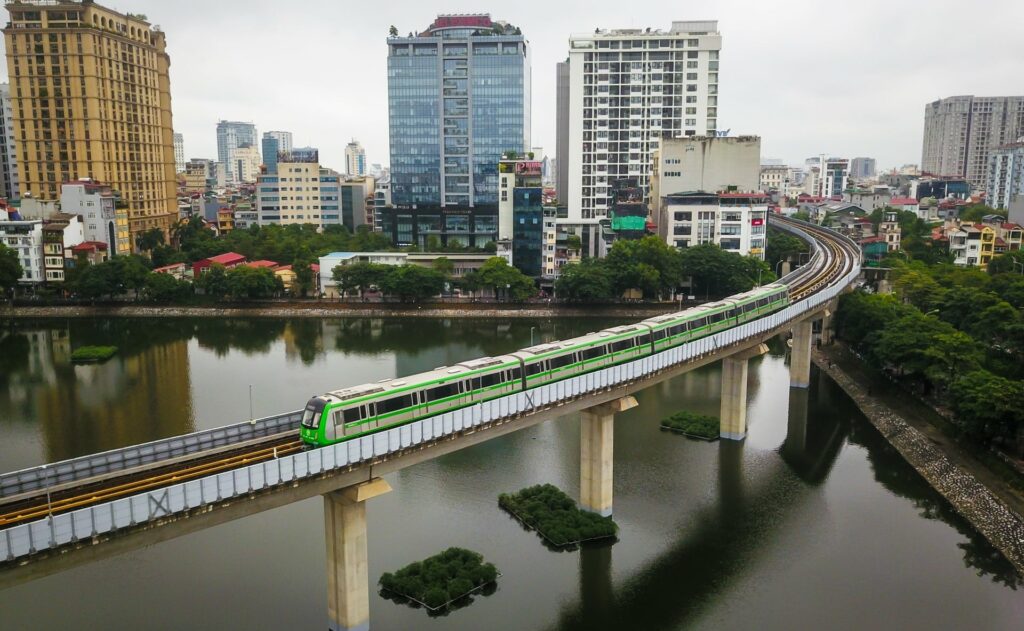
The metro stations are fairly close to one another. To get from one station to another, it takes less than 5 minutes on average. They will eventually develop more of these stations until all major parts of the city are connected.
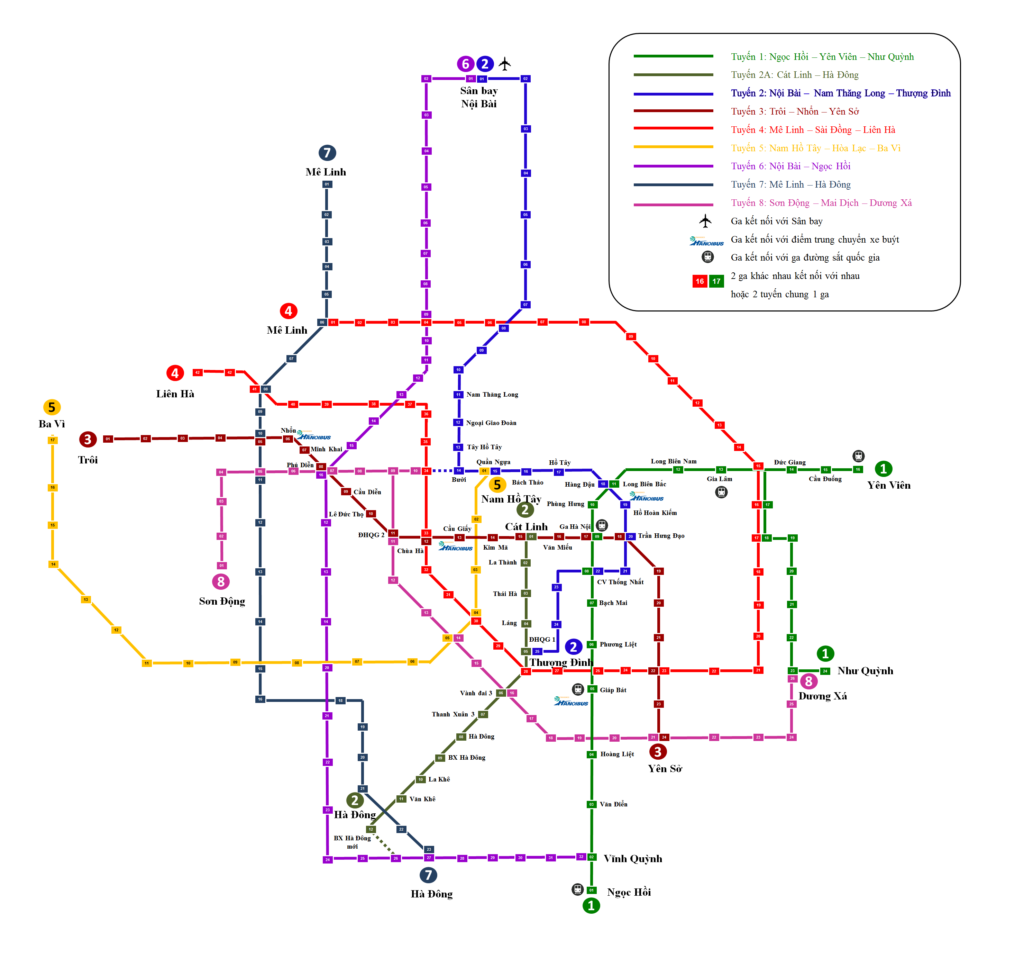
These stations are pretty clean since they are brand new, and their layouts are somehow traditional and simple in appearance. Nothing too fancy; something very functional and proven. The train and stations are open from 5:30 a.m. to 10:30 p.m.
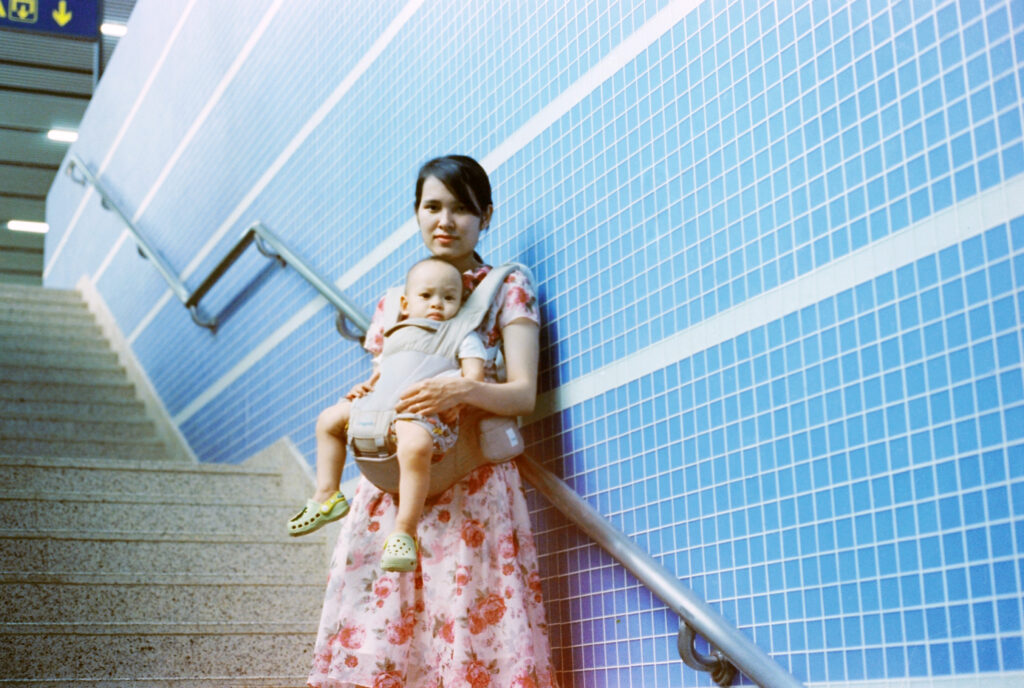
Shot on Kodak Vision 3 500T
Each station seems to be using a unique color for its tiles and shades. For example, Cát Linh is blue and Yên Nghĩa is green.
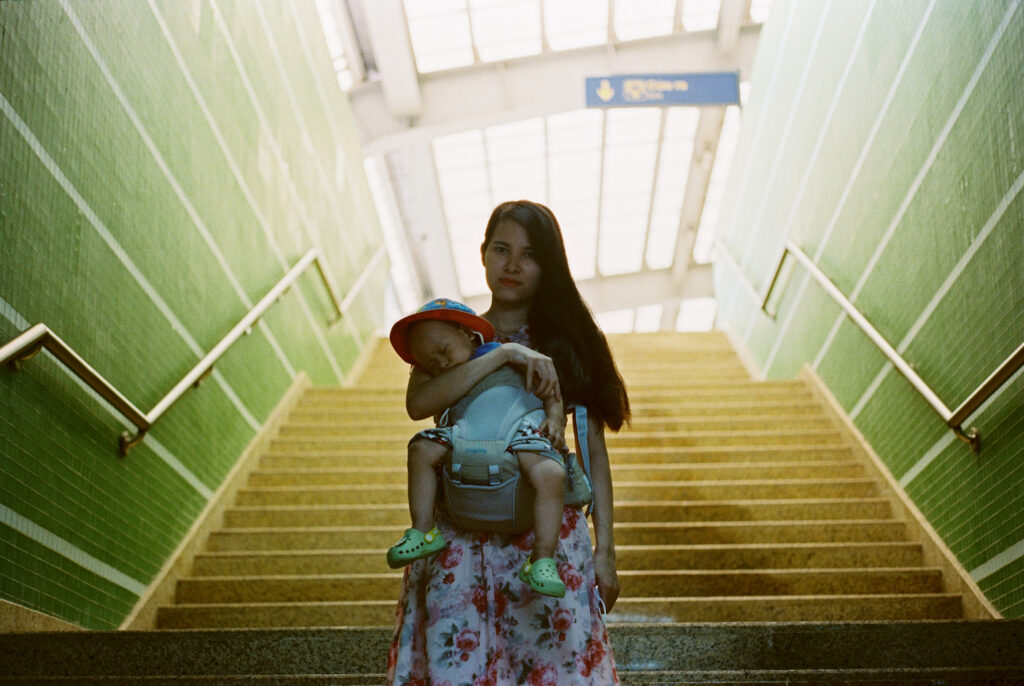
Shot on Kodak Vision 3 500T
Entrance
We tried two stations, Cát Linh and La Thành. The entrance to the station at La Thành Station was not very well indicated from the street we were in. Even our Grab driver had trouble finding the entrance.
Once we took the stairs, everything became more clear, and we were greeted with the traditional metro entrance layout. It also has an elevator for people with restricted mobility.
Buying a ticket

Buying a ticket was fairly simple, and we were actually helped by many of the staff members guiding us. Weirdly enough, a day ticket cost 30,000 VND and a single ride cost 30,000 VND. This was surprising for us and didn’t make much sense, though since the price is relatively cheap, it is still a good deal to use the metro.
Buying a ticket, like most things in Vietnam, will have to be paid in cash with bills since most Vietnamese never use their credit card because of bank fees. There are also counters with real people you can talk with in case you need it.
Ticket Barrier
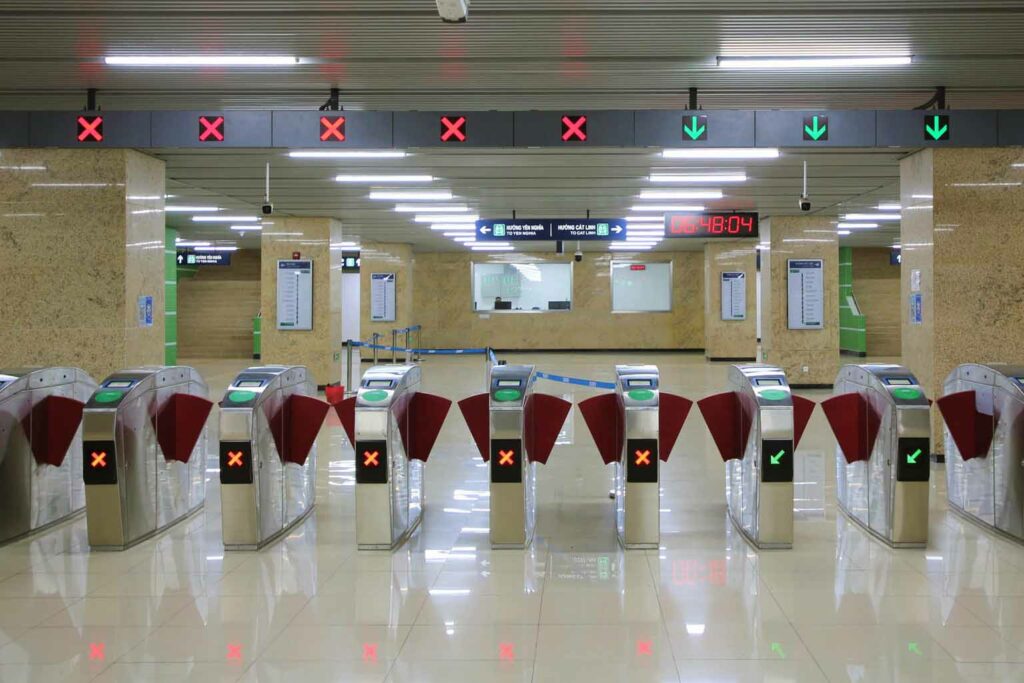
One thing to note is that a one-day ticket is actually two tickets. One electromagnetic ticket that will let you open the barrier and another paper one to get another ticket once you get out. This process is very counterintuitive.
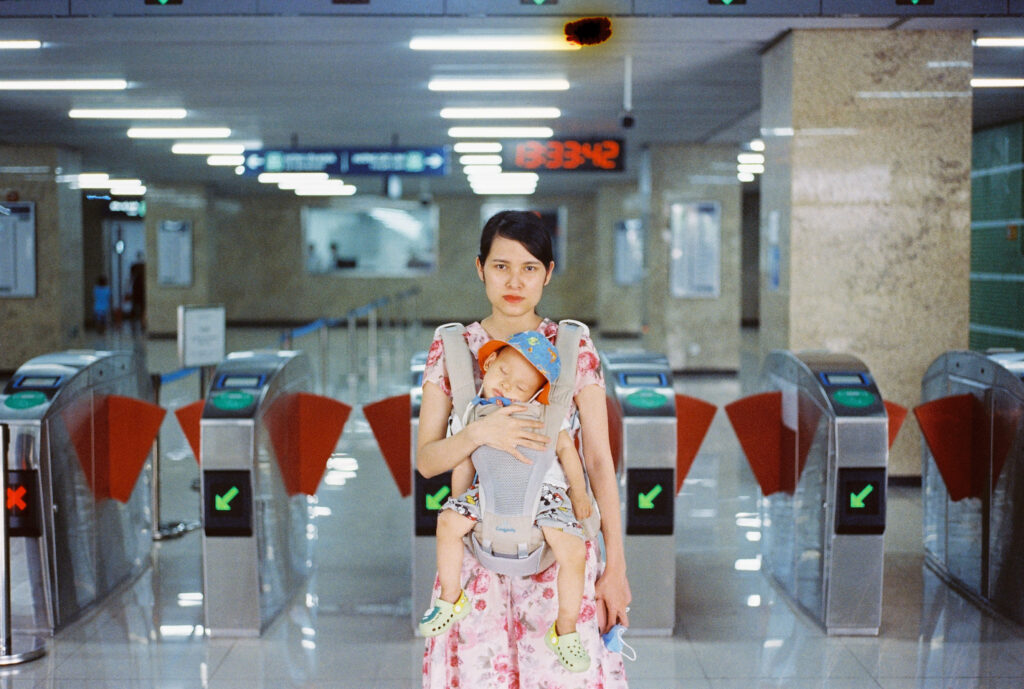
Shot On Kodak Vision 3 500T
You would think that the magnetic ticket would just work for one day. After all, that’s the whole point of using an electronic card.
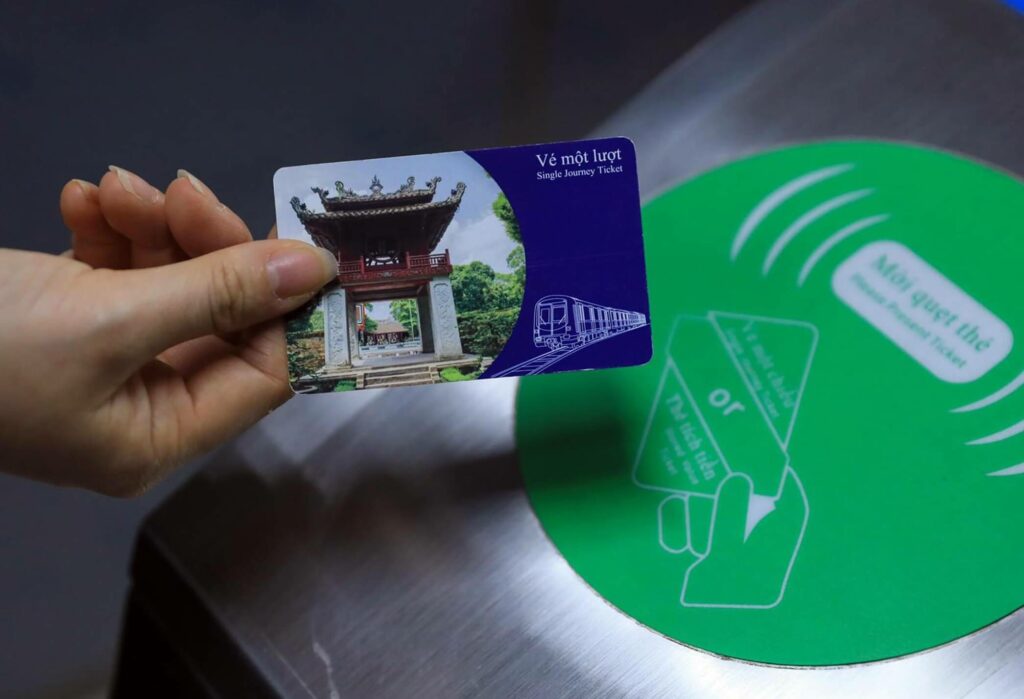
Another counterintuitive process is that the cards are taken back when you exit a station, while when you enter a barrier, you simply have to use the contactless chip inside the card. So instead of bringing the card to the reader, you will have to feed the machine into the slot.
The train platform
To access the platform, you will have to take the stairs or escalator. I believe they also have elevators for people with limited mobility.
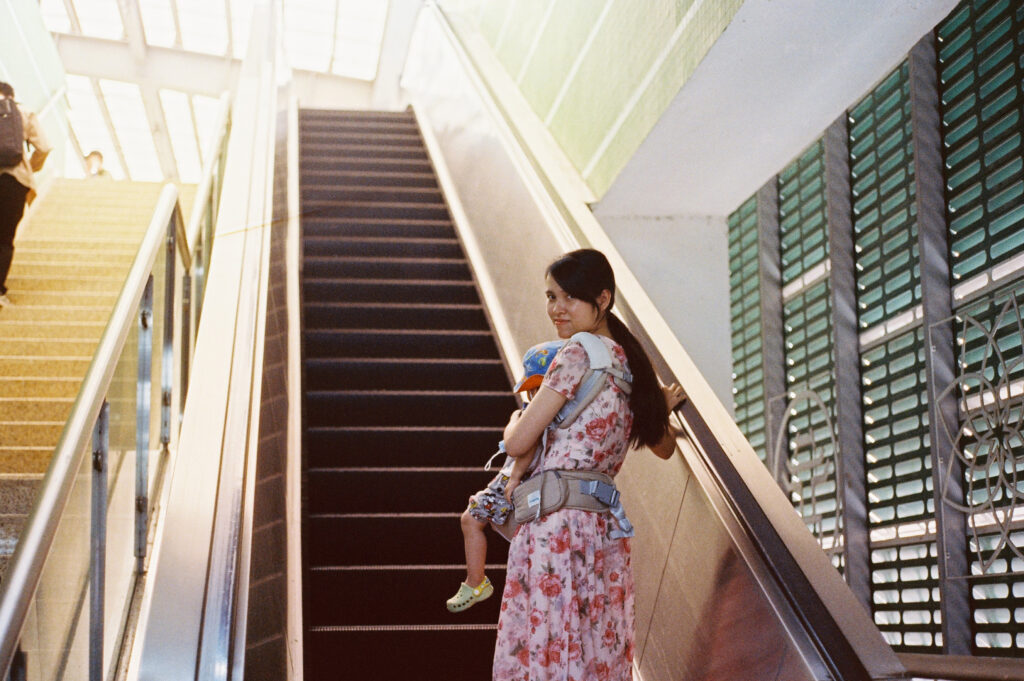
The train platforms are really classic. Sometimes you can have, like in other countries, multiple platforms for one train. One odd thing that happened to me was that the doors on both sides were open at Cát Linh Station, and I went out the wrong way.
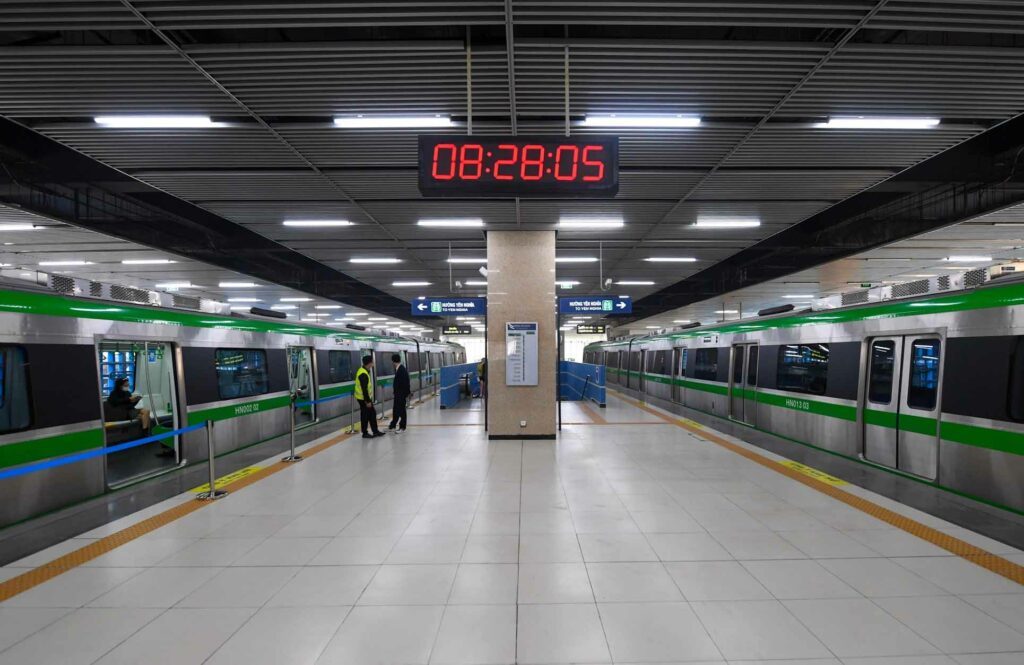
Design
Other than that, since the station has a classic layout, it is fairly easy to find the right direction. The ticket counter is always downstairs, and the train platform is upstairs. There are only two possible directions for now.
Note that the station has these colored shades on top, with the natural light giving a sepia look to the platform. It almost looks like a photo filter. This shade will change color according to the different stations.
Clear informations
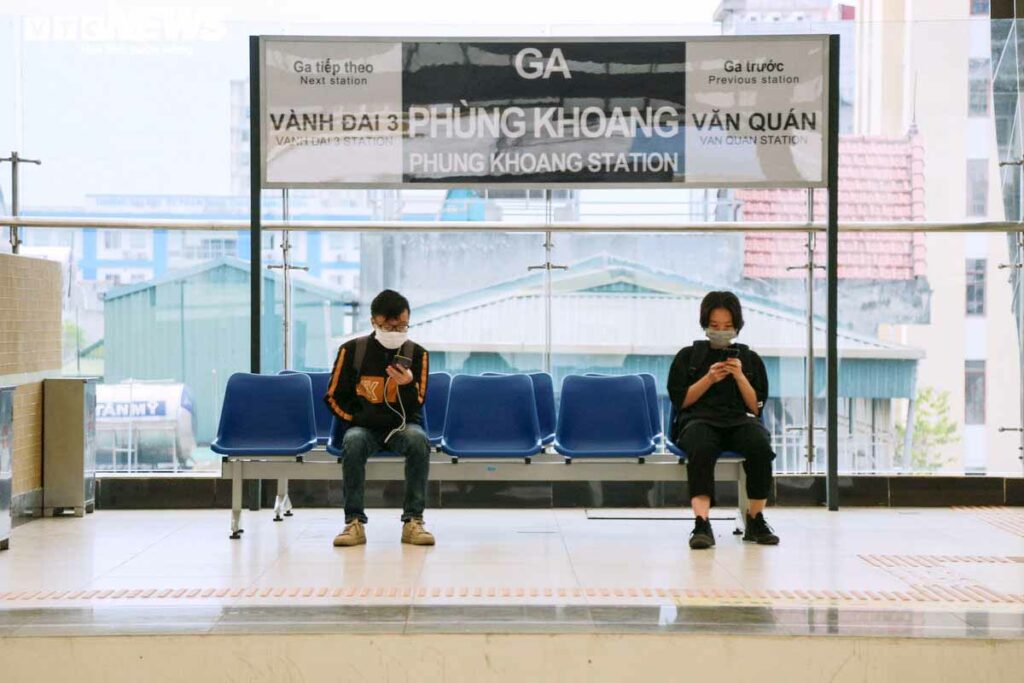
On each side of the platform, you’ll see a board with the previous and next station listed. This, I thought, was a smart way to give a sense of direction for the train. In France, they are usually using the terminus station name. For me, the Vietnamese way is simpler and more intuitive. They use Vietnamese wording as well as English for tourists.
You will also find a panel with the minutes before the two next trains come. Simple and effective. There were honestly a lot of trains; I think the time between trains was around 5 minutes.
Seats
Some seats are available for you to wait for the train, even though they are frequent. These seats are not in large numbers, but they are probably enough to accommodate the number of people within the station outside of rush hour times.
The Train
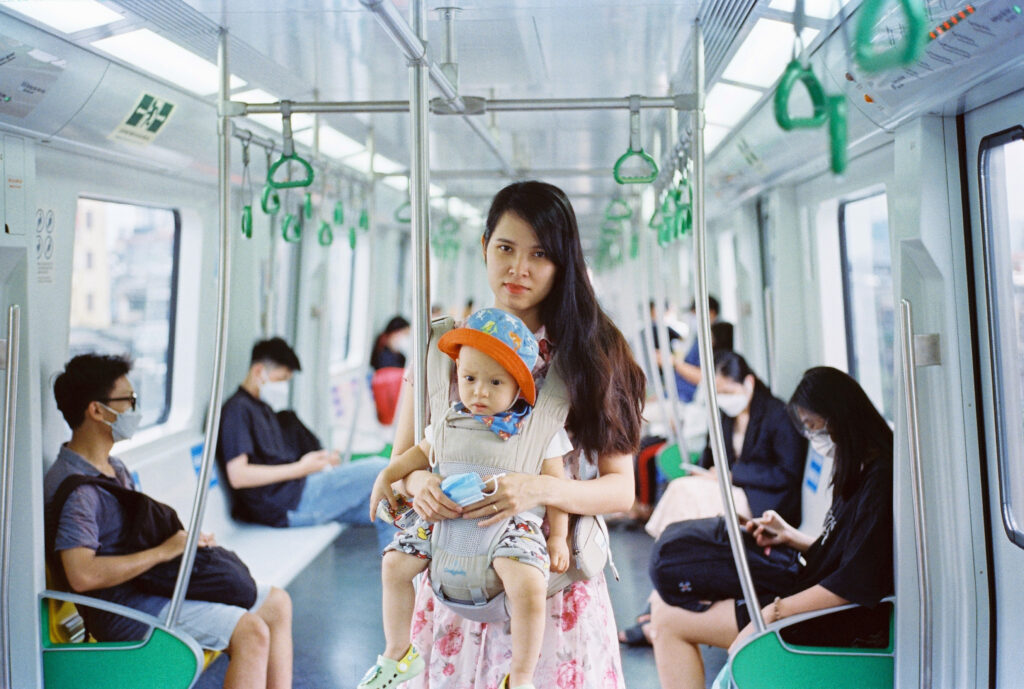
Shot on Kodak Vision 3 500T
The trains are brand new; from the outside, they seemed to be made out of brushed metal with green painting on them. They have a very regular look and are not very long in length compared to some other countries.
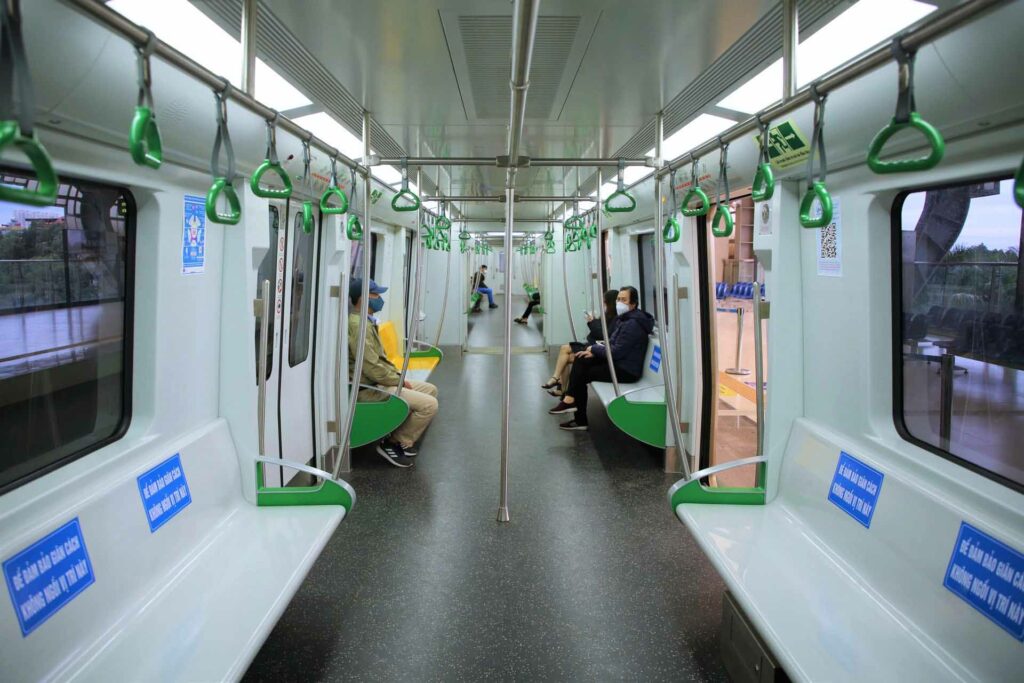
They use white colors inside for the walls, which makes the interior bright and very clean. The setup is like in New York, with seats on both sides, so it makes for a very spacious train with fewer seats as opposed to France, where people sit facing or with their backs to the next station.
The train stations are indicated with lights, so it’s clear where we are and what will be the next station. The doors are automatic and will open whenever the train stops at a station. In some countries, including France, the older trains have buttons that have to be pushed in order for the doors to open.
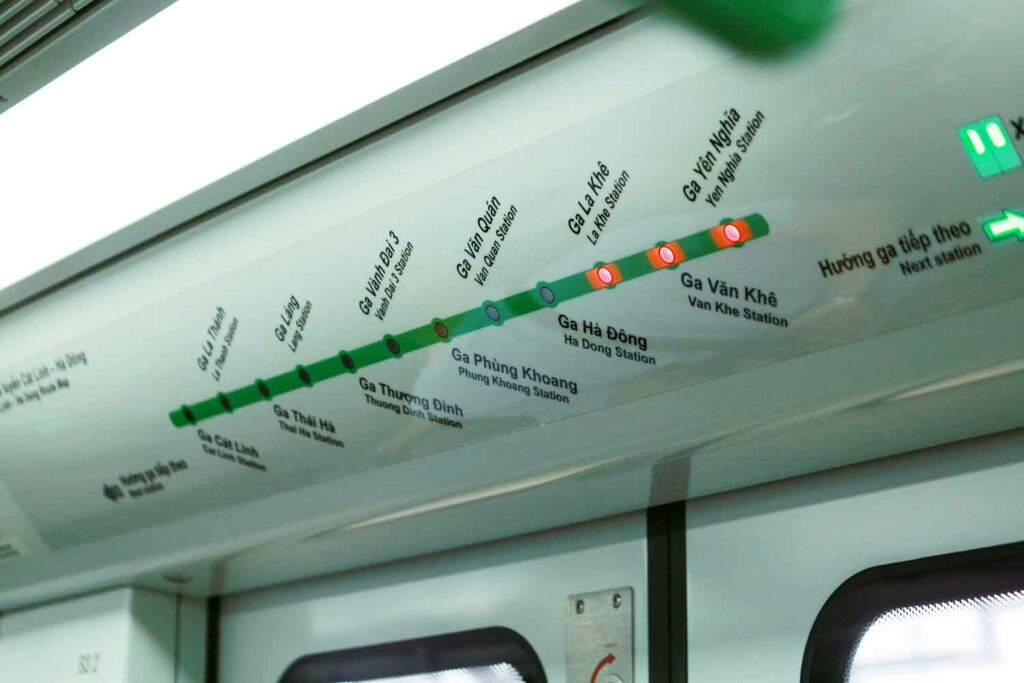
The Service
When I first came to Vietnam, I was surprised by the number of staff present in restaurants. Since the cost of salary is not as taxed as in Europe, having multiple employees is more affordable. There are a lot of employees compared to other countries.
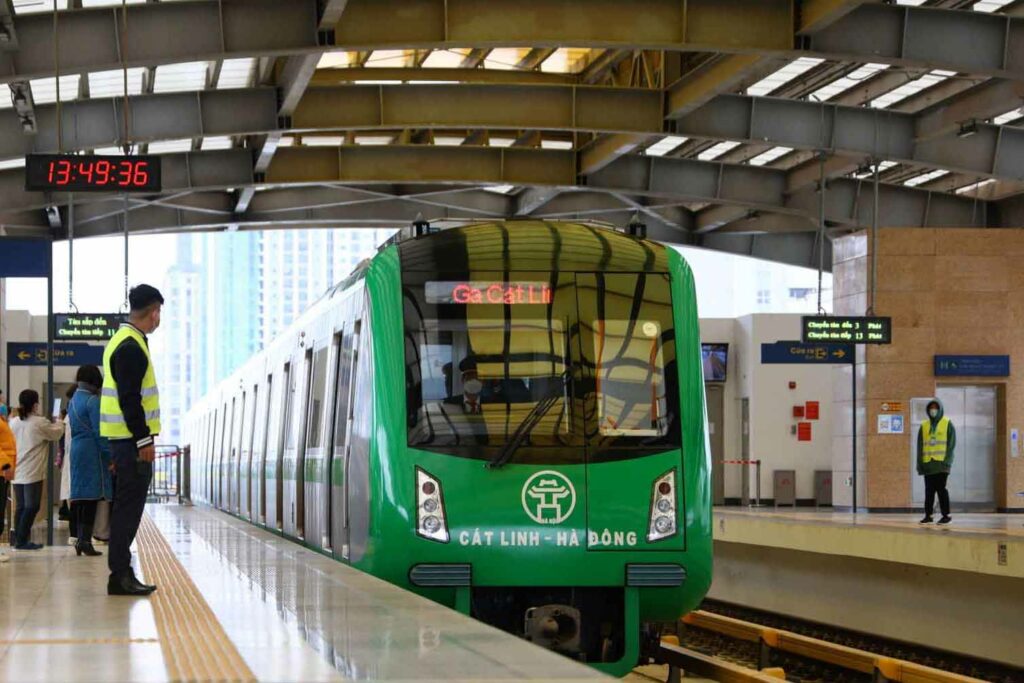
All along our customer journey, some staff members were ready to guide us. Which made it an overall great experience.
Some problematics
It’s not a secret most Vietnamese people use bikes as transportation. So the question is, can a metro be more convenient for people, knowing that the streets are not very accommodating for walkers?
What if users need to go somewhere far away from the station; how can they get to their location by walking? Can they park their bikes safely in a dedicated space in the stations? What will happen if on-demand electric bike self-service is implemented like in other countries? These solutions can even be implemented by private companies.
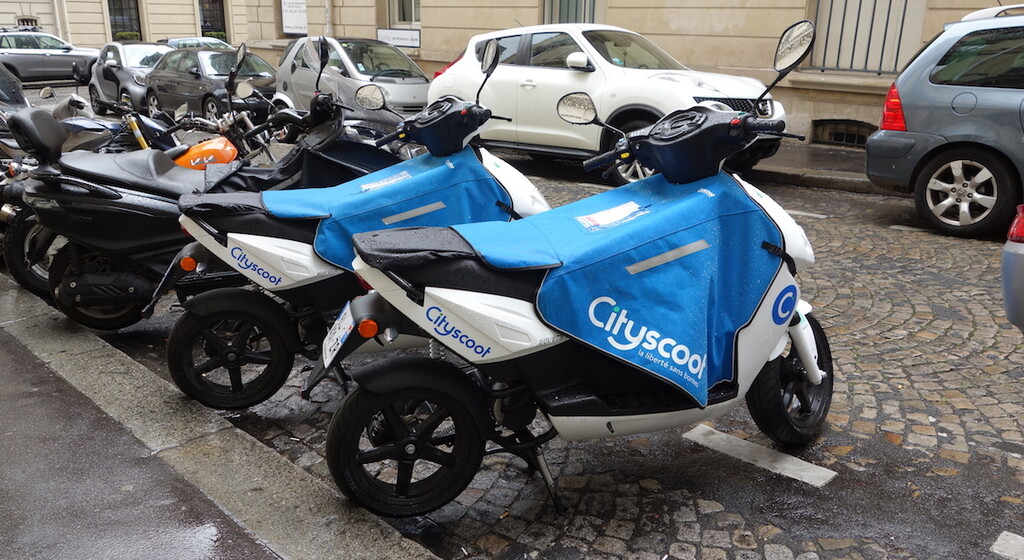
Also since COVID-19, we live in a new era where solutions have to be found for public spaces to be safe, especially in closed spaces with recycled ventilation.
These are not easy questions to answer, but I am sure solutions will be found eventually.
Verdict
8.5 out of 10.
These new metro stations are obviously an advancement for the country and its transportation system. Well engineered and built, these stations will, with time, accommodate more and more people for their daily transportation needs.
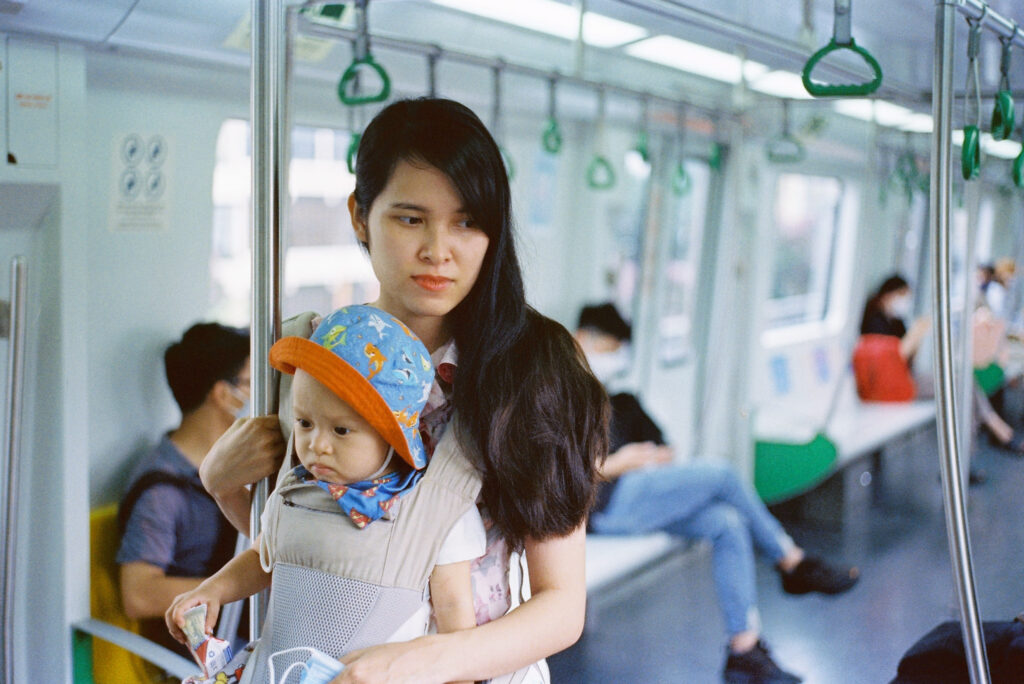
Shot on Kodak Vision 3 500T
There are still some quirks about the intuitiveness of the experience. For now, staff members are present to correct these little flaws. But eventually these will have to be addressed and fixed before it becomes too difficult with the growing number of riders.
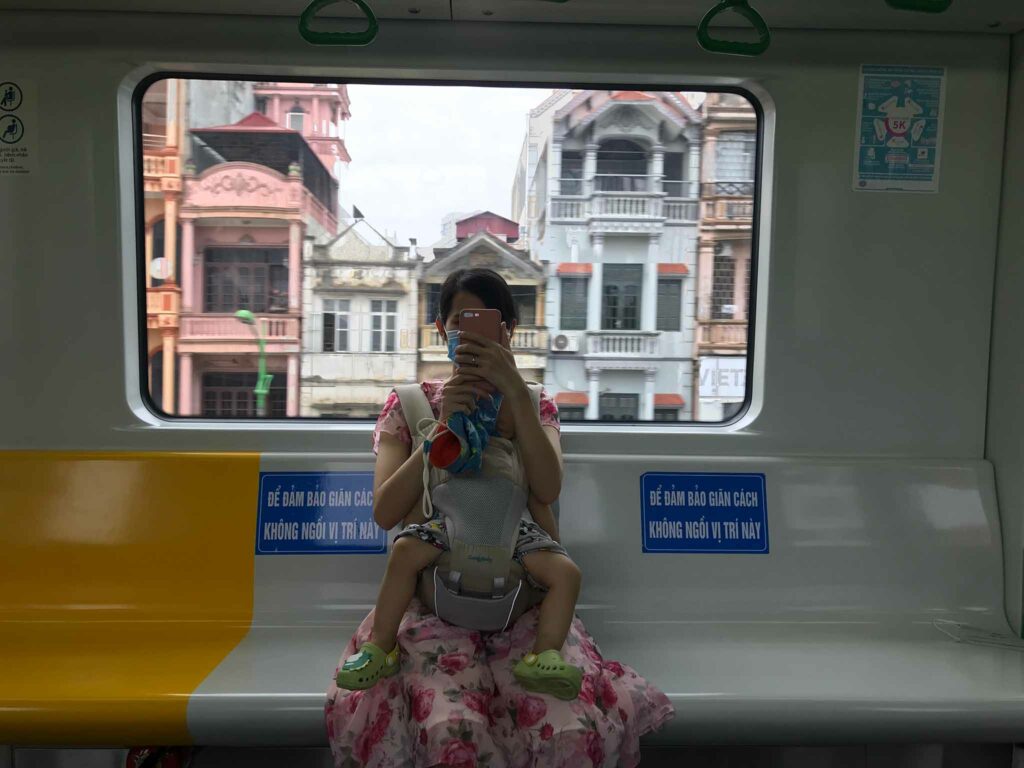
More importantly, what means of transportation can be put in place for users to get to their final destination with maximal convenience is still a problematic problem to solve.
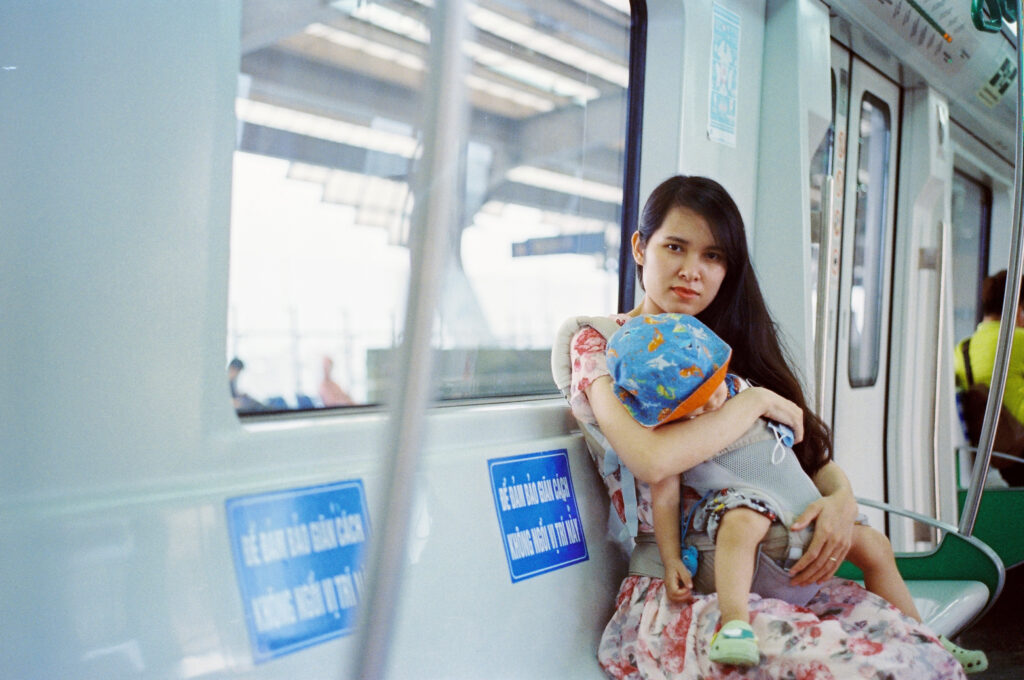
Shot on Kodak Vision 3 500T
Other than that, the metro and stations are definitely a successful first step into making transportation easier and more fluid within the capital and soon all major cities of Vietnam.
Informations
Website : http://hanoimetro.net.vn


GIPHY App Key not set. Please check settings